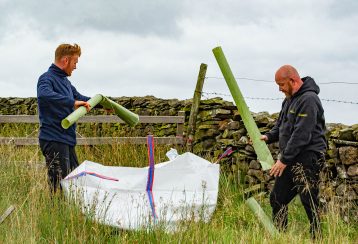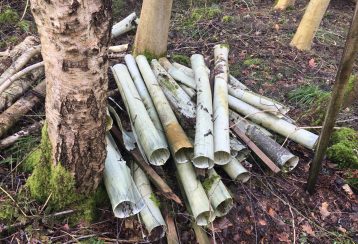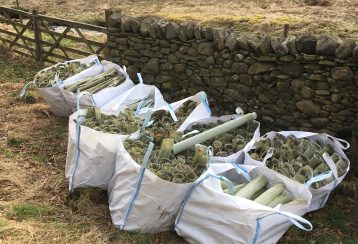After nearly two years, the coronavirus pandemic has a rival in the headlines. Climate change and the effects of global warming have been a major topic for a long time, but the publication of the UN climate change report ahead of the COP26 summit in Glasgow later this year has really highlighted the scale of both the problem and the challenges in dealing with it. It is a battle that is being waged on many fronts – from switches to greener forms of energy and energy reduction initiatives to increased recycling and the move to a circular economy, where ‘recover, recycle and regeneration’ replaces the linear economy principles of ‘make, use, dispose’.
Tree planting is another important part of the strategy. In late 2019, the UK government launched a £50 million scheme to help boost tree-planting rates in the fight against climate change. The following summer the Department for Environment, Food and Rural Affairs (Defra) introduced its new ‘England Tree Strategy’ which, subject to consultation, aims to expand tree cover, support woodland management and increased public engagement with trees and woodlands. This will help to ensure the government’s tree planting commitment – to increase tree planting to 30,000 hectares per year across the UK by 2025 – is delivered.
Tree shelters provide a vital role in ensuring every new tree planted is able to thrive and grow, protecting them from browsing animals, herbicides, pesticides and other environmental factors, and they are invaluable for forestry management, especially if the UK is to meet this commitment. And the even better news is that a tree shelter’s job is not finished once the tree has the strength and girth to survive on its own. The plastic that is used to produce the tree shelters is a valuable resource and therefore once their work is done, they can be collected and reprocessed.
Our own Tubex Collection & Recycling Programme – the first of its kind to be launched in the UK – has been developed to provide an effective solution to maximise the potential of our used tree shelters.
Working in partnership with our distributors and their end customers, the tubes are collected on-site and placed into large Dumpy sacks. The design of our tree shelters means they can be easily pulled apart and nest inside each other, which maximises the amount that can be collected in each sack – anything from 40 to 60kg.
The bags are then collected and delivered to our Aberdare site, where they are sorted, checked and cleaned to remove any unwanted items – we even found a birds nest on one occasion, not to mention numerous bottles and cans and other rubbish (a reminder of what an ongoing environmental problem careless and anti-social littering is).
At Tubex we are fortunate to be part of Berry Global and therefore have access to state-of-the-art recycling facilities within our organisation. The collected tree shelters are compacted into bales weighing around 800kg and transferred to our sister recycling company. Maximising the weight of the bales is important for the recycling process itself, but it also means we can make the most of each delivery, with the bales capable of being stacked in two so that each lorry load is the equivalent of 48 pallets of material.
The recycling process is made up of four stages, where the material is shredded and then washed while passing through a series of mesh grids with holes of increasingly smaller sizes. The combination of the abrasion of rubbing together in the water jets and passing through the grids eventually results in the production of flakes of around two to four inches in size.
The flakes are returned to Aberdare and fed into a machine that melts them and extrudes them into pellets, ready to be used again in the production of our tree shelters.
Currently, we include around 40% recycled plastic in each new shelter, but we are working to bring this up to 100% in the future. What is essential is that whatever the amount of recycled material incorporated, our tree shelters continue to deliver the same high standards of performance that ensure maximum tree protection.
This is a great example of a circular economy closed loop system, and the figures are impressive. Every recycling run of around 24,000kg of plastic is enough to make just over 153,000 new tree shelters.
Furthermore, if for any reason the recycled material is not needed for tree shelter manufacturing, it can be put to numerous other good uses – everything from refuse sacks to fencing to garden furniture.
Combatting climate change is an ongoing challenge; planting trees is a vital part of the solution. At Tubex, thanks to our Collection & Recycling Programme, we are making sure that our tree shelters can play a key role in a tree’s early life – again and again, and again.



